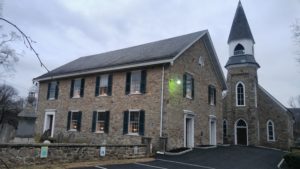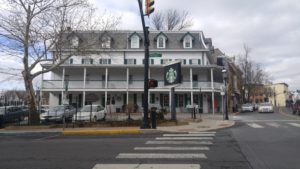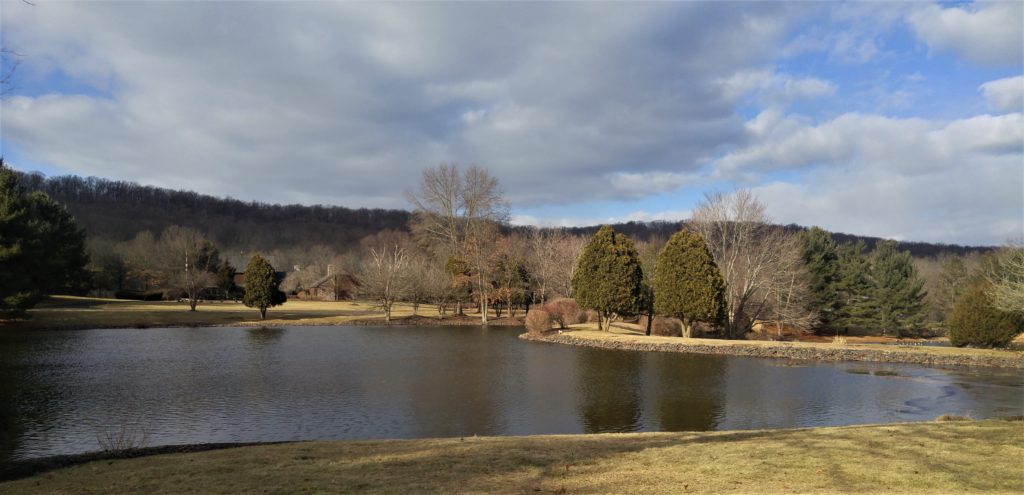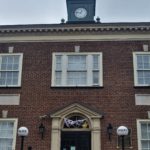Doylestown’s whale, Wycombe’s skunk farm and where everyone spoke Welsh in Bucks.
There’s plenty of serious history to write about in our illustrious Bucks County. Then there are the lesser known stories, the ones that attract my attention. Take our Welsh heritage dating to the 6th century in Great Britain.
The native language of Wales, a country contiguous to England, is “Cymraeg”. Don’t ask me to pronounce it. I think my brother-in-law Bob could, having heard him recite what I think was Welsh poetry. As for me, I would struggle to tell a Welshman such things as “I like to get up early in the morning.” In Welsh that would be “Codaf yn gynnar bob dydd.”
The fact of the matter is Welsh in the early days of Bucks County was the unofficial language of a certain section. If you were transported back in time to New Britain and Hilltown circa 1719, you might think you’d landed in an episode of “Game of Thrones”. The two municipalities in Central Bucks were Welsh. Baptist immigrants like the Griffith, Pugh, Butler, Meredith, Mathias and many other families built the settlements where Welsh distinguished communication for decades.

Next door to New Britain, I’m thinking, P.T. Barnum might have derived inspiration from a Doylestown attraction a century later. Believe it or not, a live whale was exhibited inside Doylestown Hotel in the center of town in the fall of 1815. For 25 cents, adults would stand in line to see the giant sea mammal whom I prefer to call Wally the Whale. For kids, half that cost.
Wally certainly had lost his way. He was taken captive in the Delaware River just below the falls at Trenton. Maybe he was swimming alongside a giant sturgeon trying to get past the rapids to reach headwaters to spawn. A seven-foot sturgeon was seen by fishermen around that time leaping 12 feet into the air over the river. Wally was capable of that kind of leap. It’s not known what ultimately became of our whale. Perhaps oil to light 19th century lanterns?

County history also illustrates the sad story of passenger pigeons. Flights of the pink-breasted birds were so massive in the 1850s they blocked the sun’s light. A large net was all that was needed to snag 150-175 at a time. They were lured by “stool pigeons” – dead or facsimile decoys remotely moved up and down on a stool. Within 30 years, the pigeons had been hunted to extinction.

New Hope’s Richard Corson said his father caught the last Bucks flock of 11. He kept them in cages in an unsuccessful attempt to breed them. By 1890, all but one had died. The lone survivor was set free.

Speaking of creatures, opportunity knocked in the village of Wycombe when a skunk farm opened at the dawn of the 20th century. Back then, ladies quested after skunk tails to adorn their haute couture. For Wycombe’s skunk farmer, the good times rolled. Pretty stinky times for others however. One letter writer to the Newtown Enterprise complained it was difficult living in town “with those beasts.” It’s no wonder Route 413 bypassed Wycombe when it was designated in 1911.
Lately, I’ve wondered about Jericho Mountain in Upper Makefield. What came first – the name or the monastery? When William Penn arrived in the late 1600s, the oddly crescent-shaped ridge defined the furthest known reaches of the founder’s territory. He and others called it Jericho Mountain. Historians believe it was a colonial witticism for sending someone to the furthest point of the realm – “go to Jericho.”
During the Revolutionary War, British spy Moses Doan kept an eye on George Washington from a cave on the mountain’s 400-foot summit. The general was ensconced with his command staff at a home at the foot of the hill where he signed off on the final plan to cross the Delaware and attack Trenton on Christmas night 1776. Moses rode through a blizzard to warn British troops in New Jersey but they didn’t believe him.
A century later, five monks established a monastery on Jericho. Built in 1894, it was a long, one-story wooden structure containing sleeping cells, a refectory and small chapel. Apparently “going to Jericho” became a reach too far for the brothers. The monastery sponsored by the monastic Community of Saint Benedict in New York was open only a few months before inexplicably closing. The building and its roof-top crucifix remained a landmark well into the 20th century before falling to ruin.

Miles from Jericho, Bristol must have seemed like sin city. The borough in the 1700s hosted semi-annual market fairs where settlers came to buy and sell merchandise and livestock. Things got crazy however. Horse racing, gambling, drunkenness and stealing became so pervasive town officials finally said, “Enuf!” No more market fairs after 1796.

Sources include Jeffrey L. Marshall’s entertaining “Bucks County History: Fact or Fiction?” published in 1993 and “Place Names in Bucks County Pennsylvania” by George MacReynolds published in 1942.

